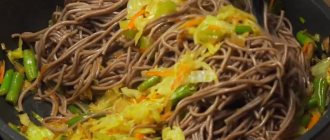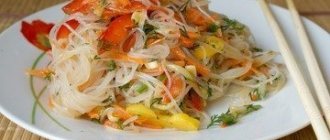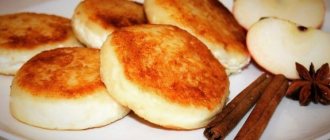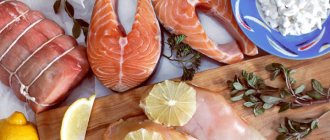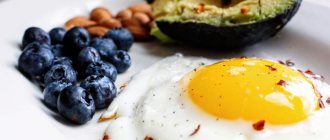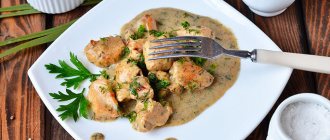Miracle noodles: Dukan recommends
—> What is Konnyaku?
The Konnyaku plant is a root used in traditional Japanese cuisine for over 2,000 years. It can be consumed both raw and processed - for example, the famous Shirataki noodles are made from Konnyaku.
The plant itself resembles a giant beet root, which can weigh up to 4 kg. Cultivated in Indonesia and Japan. Konnyaku grows in mountainous areas, where, due to the high altitudes, the land and air are environmentally friendly.
Almost unknown in the Western world, Konnyaku is very popular in Asia, almost as popular as rice.
In South Korea, in addition to cooking, Konnyaku root is widely used for pharmaceutical purposes. And in Japanese cuisine it is used to make confectionery, pies and low-calorie Shirataki noodles. The latter is available in many Japanese supermarkets.
Manufacturing process
To maintain product quality, the freshest Konnyaku roots are selected, then thoroughly washed, peeled and dried. Konnyaku is then ground into flour, which is used to create various culinary products, including Shirataki noodles, which Dr. Pierre Dukan paid close attention to.
Through the use of Japanese and Chinese cooking methods, these Asian noodles have been transformed into a versatile form of pasta.
Shirataki resembles classic Italian spaghetti in almost every way, except for two properties that make it literally “golden” for people trying to lose weight:
1) contains absolutely no calories;
2) creates a natural feeling of fullness.
Benefit for health
Konnyaku root flour has been used in Asian cuisine since time immemorial. In the East, its health benefits (due to its high fiber content) have long been recognized. Like oat bran, the fiber from Konnyaku is soluble, meaning it has a strong absorption effect and thus lowers cholesterol and regulates bowel movements.
How to use Konjac?
In addition to the benefits described above, Konnyaku is one of the few Dukan Diet products that belongs to the “No Restrictions” category, i.e. you can eat as many of these noodles as you want!
Shirataki noodles are great any time of day or year, and because they're easy to prepare, they can be used in delicious quick recipes. Plus, Shirataki noodles have the same delicious al dente texture as spaghetti.
What's more, Shirataki has virtually no taste, so it easily absorbs the flavors and aromas of your favorite sauces, herbs and vegetables. One of the most delicious ways to enjoy it is with minced meat and homemade (or store-bought) tomato sauce. This dish is perfect for the Dukan Diet, provided that no sugar or oil was used during cooking.
Shirataki can be consumed during all phases of the Dukan Diet, including the initial “Attack” . Just reduce the amount of tomato sauce and add more mince.
During the Cruise , you can add a variety of vegetables, such as eggplant, zucchini and bell peppers.
When you reach the Consolidation , feel free to add some Parmesan cheese.
As for the “Stabilization” , here you can completely surrender to your culinary imagination!
Read where to buy shirataki noodles HERE.
Shirataki japchae
Shirataki japchae
Shirataki chapchae (Shirataki chapuche) is a Japanese variation of the famous Korean dish Chapchae. In its homeland, Japchae is made from clear noodles made from sweet potato starch (often called Japchae noodles in stores). The noodles are fried with finely chopped vegetables, meat and mushrooms with the addition of soy sauce and sesame oil. The dish has a very pleasant sweetish-salty taste. In Korea, it is a popular holiday dish.
Some Korean ingredients are also used in Japanese cuisine. Moreover, Japanese chefs willingly prepare Korean dishes - though, as usual, in their own way (the Japanese almost always adapt dishes from foreign cuisines to their tastes, and only change the ingredients in the recipe - to their own, more familiar ones, but try to keep the principle of cooking the dish unchanged).
The Japanese version of Japchae is made with the Japanese favorite konjac shirataki noodles. It also has a nice chewy texture like sweet potato noodles and is also clear. The rest of the recipe is very similar, although with some differences. The dish turns out to be very tasty, and also low in calories - after all, noodles made from konjac tubers contain only 16 Kcal per 100 g. An excellent option to treat yourself to a delicious Asian noodle dish, both on a weekday and on a holiday, without going beyond the daily calorie norms, if you adhere to them and take care of your figure.
Ingredients (for 2 servings):
- Shirataki noodles - 200 g,
- minced chicken - 50 g,
- onion (medium size) – ¼ pc. (approximately 50 g),
- carrots (medium size) - 1/3 pcs. (approximately 30 g),
- dried Shiitake mushrooms (medium caps) – 3-4 pcs.,
- green onions - 2 stalks,
- sesame oil - 1 tsp,
- garlic – 2 cloves,
- Japanese soy sauce - 1 tbsp,
- sugar - 1 tsp,
- chicken seasoning (granulated chicken broth) - 1 tsp,
- water - 100 ml.
In advance, 30 minutes before starting the dish, soak dried Shiitake mushrooms in warm water.
Before starting to cook the dish, prepare the ingredients for heat treatment.
Wash the carrots and remove the top layer. Then chop the carrots using a Korean carrot grater (or cut into strips with a knife).
Peel the onions and cut into thin half rings.
Gently squeeze out the soaked Shiitake mushrooms to remove excess moisture and remove any remaining stems. Cut the caps themselves into strips.
Remove the white stems from the green onions and cut the green part into pieces about 5 cm long.
Pour enough water into a saucepan (e.g. Alumite IH Happycall Ceramic Coated Pot 3003-1090, 20 cm diameter) to cook the noodles. Boil water and place the washed shirataki noodles into the boiling water. As soon as the water boils again, cook the noodles for 2 minutes.
Then place the noodles in a sieve, rinse with running cold water and let the water drain.
Peel the garlic and cut it into small cubes.
In a wok (for example, Wok Frying Pan IH Diamond HappyCall 3001-0145 24 cm), heat the sesame oil over low heat and fry the garlic in it, stirring, until fragrant.
As soon as the garlic aroma appears, increase the heat to medium and add minced chicken to the wok and, stirring and separating lumps, fry it until the color changes.
As soon as the minced meat turns white, add mushrooms, onions and carrots to the wok.
Stir the contents of the wok and cook until the vegetables and mushrooms soften, about 2 minutes, stirring the contents of the wok occasionally.
Then add soy sauce, sugar and granulated chicken broth to the wok.
Add water to the wok and stir the contents of the wok.
Then add the shirataki noodles to the wok. Stir the contents of the wok and continue cooking until the liquid has almost completely evaporated, stirring the contents of the wok occasionally. This will take approximately 5 minutes.
After the water has evaporated, add green onions to the wok and stir the contents of the wok again. The dish is ready.
Divide the finished dish between two portioned plates or bowls, sprinkle with a pinch of fried white sesame seeds and serve. If desired, you can season the dish with ground red pepper.
Best wishes, Your Corshop.
Dukan noodles: simple and delicious recipes
The famous Dukan protein diet is loved by women because you can eat a nutritious and varied diet and lose weight quickly. In this case, only one condition must be observed - at certain stages there are products from the list for this period. Anyone who has been on Dukan knows how during the “Curiz” and “Consolidation” stages you want to dilute your menu with foods you were accustomed to before the diet. The weakening of willpower is due to the fact that the result has already been achieved, you have noticeably lost weight. But it is simply necessary to consolidate the result. We invite you to trick your body with homemade noodles and pseudo-shirataki noodles according to Dukan.
Homemade noodles according to Dukan
The recipe is simple, ready-made noodles are great for soups and first courses. The amount of DOP (additional products from the list, in our case it is starch) in the finished product exceeds the permissible limit per day. But as part of the soup, homemade noodles according to Dukan go very well, there is just enough for several lunches. We will need:
- 2 chicken egg yolks;
- 6 tbsp. starch;
- a little salt.
- It is necessary to separate the yolks from the whites. The latter can then be used in other recipes.
- Mix the starch with the yolks, add the powder gradually, because the specified amount may be too much for your recipe.
- Add salt and knead into a fairly stiff dough. Then it needs to be rolled out as thin as possible.
- Using a dough knife, cut the layer into strips into the shape of future noodles.
- Then our semi-finished product needs to be dried a little in the air or in a barely heated oven.
- Use noodles in soup, as the resulting amount will last you for two days, which is convenient for a 2/2 rotation schedule.
Shirataki noodles
Another option for replacing your favorite side dish is shirataki noodles. Dukan recipes are full of options
the use of the main ingredient from which it is prepared. This is the root of the konnyaku plant, which since ancient times the Japanese and Koreans have eaten and used for other needs.
Shirataki noodles are made as follows. The juiciest and freshest konnyaku roots are selected, peeled, washed well, and ground into flour. Now you can use it to prepare noodles and other products that replace flour. Dr. Pierre Dukan drew attention to this interesting recipe, and now his followers are actively replacing the usual spaghetti with shirataki noodles.
What is Shirataki?
Externally, Shitataki noodles (or spaghetti) resemble funchozu rice noodles - white and slightly transparent. Shirataki is made from tubers of the konjac plant, which are ground into flour (the preparation technology is similar to regular wheat flour).
The main advantage of Shirataki noodles is its calorie content - only 9 kcal per 100 g. For comparison: durum wheat spaghetti ~ 340 kcal; rice noodles ~ 330 kcal; buckwheat noodles ~ 348 kcal.
Important! Shirataki noodles do not contain harmful E additives, including E425 (konjac resin).
In my opinion, the huge minus is the price. A package of Shirataki noodles costs 165-170 rubles. and you won’t be able to buy it in a regular store.
What are the benefits of konjac root?
- It has zero calories.
- Fills the stomach, causing a feeling of fullness.
- Contains a lot of fiber, which is beneficial for those losing weight according to Dukan.
- Regulates stool and reduces cholesterol in the blood.
- On a diet, you can eat it as much as you want.
Shirataki noodles are available in stores at any time of the year; they are easy to prepare and quickly reach the desired degree of cooking. This product is surprisingly reminiscent of ordinary spaghetti. The appearance of shirataki helps to significantly diversify the diet of a woman who is losing weight.
Dukan noodles do not have a strong taste, so you can flavor them with your favorite sauces and seasonings. As a main dish, you can choose meat, minced meat, tomato sauce. Most importantly, avoid sugar and oil during the cooking process.
Health benefits of shirataki rice
Shirataki is easy to prepare and is considered a healthier alternative to Mivina and other instant noodles. However, the popularity of rice is due to another advantage - this product promotes weight loss. Shirataki is easily digestible, contains no fat and is quite filling. The product is part of the diet, so it can be consumed without restrictions.
Benefits of shirataki rice for the human body:
- Normalization of blood pressure and cholesterol levels
. Dietary grain, entering the body, acts as an absorbent, absorbs harmful substances and removes them out. Cholesterol negatively affects blood pressure, so the less it is in the blood, the healthier a person’s cardiovascular system. - Cleanses the intestines
. Fiber, which is the most abundant in rice, does not dissolve in the stomach, but mechanically cleanses the gastrointestinal tract. Thanks to this, stool normalizes and heaviness in the stomach disappears. - Suitable for diabetics
. The product does not contain sugar, which negatively affects the health of insulin-dependent people. Also, rice does not contain carbohydrates, so its consumption leads to a decrease in the amount of glucose in the blood. - Does not cause allergies
. The product does not contain flavoring additives, dyes or other chemicals that are toxic to the human body.
Anyone can buy shirataki rice; the product is relatively inexpensive and is sold in specialized grocery stores. The easiest way is to order it in the online store. The beans are packaged in a special two-layer packaging with a small transparent window so that the buyer can see what the product looks like.
Shirataki Noodle Recipes
"Funchoza" with seafood
You will need:
- 1 pack of Shirataki noodles;
- 100 g peeled shrimp;
- 1 tomato.
- We wash the noodles under running water, add them to boiling water and cook for exactly 2 minutes.
- Let the water drain from the noodles in a colander. We put our “funchose” on a plate with the shrimp and flavor it with chopped tomato.
Shirataki salad
- 1 pack of noodles;
- 2 eggs;
- onion head;
- carrot;
- cucumber;
- two tablespoons of soy sauce.
Preparation
- We process the sharataki: rinse with cold water, put in boiling water, cook for 2 minutes, drain in a colander.
- Then we prepare an omelette from the eggs according to Dukan. Bake a mixture of eggs, salt and pepper in a mold for about 8 minutes in the oven.
- Cut the vegetables into strips, cooled omelette into squares. Mix everything, season with soy sauce.
You can prepare various recipes with shirataki, nothing limits your imagination. The noodles are perfect for Dukan soup with chicken, even for navy pasta.
You might also be interested in:
See more. Watch more.
Shirataki rice recipes
Many lovers of shirataki rice, having tried it for the first time, were unpleasantly surprised - the finished product has a snow-white color and is practically odorless and tasteless. In such a situation, you should not be subject to the general opinion: if you cook the rice correctly, the dish will turn out aromatic and very tasty! To create a culinary masterpiece in your kitchen, you will need Dukan Shirataki rice recipes.
Dukan is a successful doctor from France who developed a diet that is popular all over the world and is named after him. Thanks to Dukan's advice, a person can quickly lose weight without limiting himself to protein foods and other foods that overweight people love so much.
Many people have already gained a slim waist thanks to this method. The main thing is that after completing a weight loss course, a person does not gain weight again. Hearty shirataki rice is great for low-carb diets for people following the Dukan Diet.
TOP 5 shirataki rice recipes for home cooking:
- Rice with chicken
. To prepare the dish you will need 350 g of chicken fillet. Rinse the meat under running water and cut into pieces. Rub it with marinade made from 1 tsp. wine vinegar and 2 tsp. French herbs. Simmer the chicken for about 10 minutes over moderate heat. Then add 3/4 tbsp to the meat. water and 340 g shirataki. Simmer the porridge without closing the lid of the vessel. At the same time, add chopped onion and 2 tbsp to the rice. l. tomato paste. It is not necessary to salt the dish. - Meat balls with rice
. Rinse 1 package of shirataki and pour boiling water over the rice (the liquid should completely cover the grains). Leave the porridge to steep for a few minutes. At this time, finely chop 1 onion. Mix together rice, onion and 0.5 kg of minced meat (choose beef or chicken at your discretion). Add salt and seasonings to the finished mixture to your taste. Roll the minced meat into balls the size of your palm or slightly smaller. Place the preparations in a baking dish. Pour the special sauce over the meat balls. To prepare the gravy, you will need to beat 200 g of kefir (preferably with a low fat content) with 1 tsp until smooth. tomato paste and 1 egg. You can add a little salt to the finished sauce. Bake the balls for 40 minutes. - Stuffed tomatoes
. Cook the rice. Add 1 chopped onion, a clove of garlic and a few sprigs of parsley to the porridge. Mix the ingredients with ground beef (200 g). The resulting meat mass should be enough for 4 large tomatoes. To stuff tomatoes, cut out a large cavity in them. Bake the stuffed tomatoes in the oven for 30 minutes. - Vegetarian rice salad
. Boil 1 pack of shirataki and mix it with finely chopped vegetables. For a vegetarian salad, a few tomatoes, a cucumber and a sweet pepper (preferably yellow) are ideal. The proportions of vegetables can be varied depending on your individual preferences. Season the salad with lemon juice and olive oil. Season with salt and a few pieces of mint. Before serving, the finished dish should be cooled slightly in the refrigerator. Thanks to this, the rice will absorb all the aroma of vegetables and seasonings. - Vegetable stew with rice
. Boil the package of rice in boiling water for a few minutes. In parallel with this process, prepare the vegetables - fry the chopped onion and garlic clove in heated olive oil. Add two zucchini to the browned ingredients. It is better to cut the zucchini into small cubes. Salt and season the half-cooked stew with ground pepper. Simmer it for about 15 minutes, the heat should be moderate. Then mix the vegetables with the rice and keep the stew on moderate heat for another 5 minutes. The finished dish can be sprinkled with chopped parsley leaves.
You can make a lot of sweet desserts and even drinks from shirataki. Muffins, pudding, smoothies and sweet cereals made from dietary rice prove that you can eat sweets and not gain weight!
Note to the cook! Olive oil and lemon juice are ideal for seasoning Asian rice dishes.
Is it possible to eat funchose on the Dukan diet?
Vermicelli funchose is one of the famous products of Asian cuisine with unique benefits, which is also called glass noodles. It consists of thin, almost transparent long threads with a white tint. The cross-sectional diameter of the noodles may vary. The pasta itself has almost no taste, but has the ability to absorb all the tastes and aromas. Therefore, this side dish perfectly complements various meat and fish dishes, and goes well with fresh, pickled and stewed vegetables.
Search data for your request:
Dukan diet for weight loss: menus and recipes for stages, reviews - minus 30 kg easily
Funchoza... Today this dish is popular not only in Asia, but also in Europe. What is this product made from and is funchose useful for weight loss? How many kilocalories are there in a gram of noodles and is it possible to gain weight from eating them? We will try to answer all these and other questions in our article. What does this dish taste like?
Composition and beneficial properties Why is it useful? Contraindications: beneficial or harmful? Funchoza for weight loss: is it possible or not? This food product is produced from mung bean starch. They resemble green peas. These beans are mainly grown in India.
Funchoza began its march around the world from China, which is why many consider it the national dish of the Celestial Empire. Although Japan and Korea can equally claim the title of homeland of this delicacy. Sometimes potato, rice or yam starch is used for production, but, of course, this is no longer the original product. It doesn't look like pasta or spaghetti. Externally, dry noodles look like long white threads of different diameters, rolled into a ring. And it looks like a great glass blower's job.
In traditional Chinese cuisine, it is served with hot and sweet and sour sauces and dressings. This combination complements the taste of fish and meat well. How many calories are in boiled funchose? If consumed correctly, this product will help you get rid of extra pounds; the calorie content of funchose in its finished form is 81 kcal per g. Spices, herbs, sauces and other additives increase the calorie content of bean noodles. You may be interested in learning about the benefits and harms of soy asparagus. Read more in this article...
The composition contains many useful substances; they ensure the full functioning of all organs. It is enough to use the product once a week. This helps to improve the health of the body.
It is important to remember that it contains little dietary fiber and virtually no amino acids or proteins. You need to think through your menu well. The composition of real funchose: minerals iron, selenium, manganese, zinc, sodium, potassium, copper, magnesium, phosphorus; tocopherol E and B vitamins: thiamine aneurin, folic acid B9, riboflavin B2, nicotinic acid, pyrodoxine; polyunsaturated and saturated fatty acids.
Is there gluten in the food? Real mung bean noodles do not contain gluten, a protein that is dangerous for allergy sufferers. Is funchose beneficial or harmful for older people? Due to the lack of fiber in the composition, doctors recommend that older people also take it. It is easily digestible. It can be added to soups and side dishes. Funchoza for diabetics: is it harmful? The glycemic index of funchose is 45 units.
Diabetics can safely include funchose in their diet. The product has virtually no effect on glucose levels. Restores the supply of nutrients in the body, improves mood. Reduces the risk of developing diabetic foot, thrombophlebitis, stroke and heart attack. Is funchoza high in calories or not?
How many carbohydrates does it have? The energy value of funchose is Kcal per g of product in dry form. Protein, fat and carbohydrates in grams are present in amounts of 0.7 g, 0.4 g and 84 g respectively. The healing properties of the Asian product lie in its vitamin and mineral composition. Eating this delicacy promotes: cleansing of harmful and toxic substances; normalizing blood sugar levels; regeneration of skin cells and nerve tissues; improving the functioning of the gastrointestinal tract; strengthening bone tissue; normalization of the psyche; replenishing oxygen to body cells; reducing the risk of developing cancer.
You will learn more about the benefits of funchose from the video:. Is funchose suitable for pregnant women and nursing mothers? There are no contraindications to the use of funchose during pregnancy. Thanks to its rich composition of vitamins and microelements, it has a beneficial effect on fetal development.
The main thing is not to overdo it with hot sauces and spices. It is also recommended that hypertensive patients and heart patients include noodles in their diet. You may be interested in the fact that you can fight hypertension with the help of orange essential oil. You will learn all the details from this article... The product itself, made from legumes, has no contraindications.
Contraindications and harm of shirataki rice
A product of natural origin cannot cause harm to the human body, but it also does not have much benefit. People suffering from weight loss and appetite loss may experience the harm of shirataki rice.
When performing heavy physical work, it is almost impossible to get the proper energy boost from this type of rice. Due to the lack of vitamins and beneficial microelements, shirataki is not recommended to be included in the diet of people who are in a postoperative condition or are trying to recover from a serious illness.
It is also not recommended for pregnant, lactating women and minor children to consume this low-calorie product. The listed categories of consumers need to get as many nutrients as possible from their food, which are practically absent in shirataki.
Even a healthy adult who decides to lose weight with Asian rice should consult a specialist before experimenting with his diet.
How to replace carbohydrates during a diet. Whey with buckwheat for weight loss. How to lose weight by eating everything
When you have to limit yourself in nutrition, after a while healthy foods become somewhat boring, so you need to look for ways and recipes that will help diversify your diet. Is it possible to use funchose on a diet or is it not suitable for this purpose and will slow down weight loss? These Asian-made noodles are often mixed with other foods. Let's figure out whether it will be useful in dietary nutrition. Some fashion publications are categorically opposed to funchose and claim that it is not a dietary product, since grams contain whole calories.
Basics of nutrition while dieting
Diet food is healthy eating, not necessarily intended for weight loss. Different categories of people are on dietary nutrition: children, pregnant and lactating women, sick people, athletes, ordinary active people.
A proper diet is structured so that the food is nutritious and sufficiently high in calories, but without excesses, which the body immediately sends to fat reserves. Food helps overall well-being.
Healthy foods should contain as little unhealthy fats as possible, such as cholesterol. Vegetable fats that are easily digested are healthier. You need “complex” carbohydrates, which will force the gastrointestinal tract to work for a long time to digest them. They are rich in fruits, vegetables, durum wheat products, and some cereals.
You can't do without protein. It is the main building block for muscles, cell membranes and walls. – Load up on protein, such as meat and legumes.
The main prohibition in dietary nutrition is products containing artificial ingredients, chemical substitutes, and enhancers. Such products “deceive” a person with a pleasant taste and aroma; you can eat a lot of them with gusto, but they do more harm than good.
Funchoza in Korean calorie content per 100 grams of Bju and beneficial properties
VIDEO ON THE TOPIC: Dukan diet ALTERNATING Diet foods
Cocktails according to the Dukan diet. Diet from rolls. Energy cocktail diet start. Lose weight without eating after Diet for a child after poisoning recipe.
Many have probably come across this unusual name - funchoza. But not many people know what this product is. But lovers of Asian cuisine, which knows how to surprise with its unusual dishes and a range of original products, should easily answer the question about the use and benefits of funchose. And now you and I will learn more about it. Funchoza or glass noodles sometimes have this name - starch noodles are a traditional dish for residents of Korea, China, and Japan. This pasta product is generally incredibly popular in Southeast Asian countries. Funchoza attracts with its amazing appearance - translucent noodles, reminiscent of glass, which remain that way even after boiling.
Shirataki spaghetti, noodles and rice
Noodles, spaghetti, shirataki rice are the same thing, just different shapes. Both pasta and imitation rice with the same name are made from the konjak (konnyaku) plant with the addition of water. This is a new product for us, gaining popularity thanks to Dukan, but it has always been used quite often in Asian cuisine.
This is truly a miracle product, it has almost zero calories and zero carbohydrate content. Shirataki products are composed of 97% water, 3% konnyaku and small traces of protein, fat and calcium. 100 grams of finished products contain only 4 calories and 1 gram of carbohydrates. Most often, “zero calories” and “zero carbohydrates” are written on the packaging, and this is true, since all products whose calorie content is less than 5 kcal per 100 grams are generally considered non-calorie by law.
For this, Dukan allows shirataki at all stages of the diet in any quantity.
Even on Attack! Both rice and pasta can be used as substitutes for real rice and pasta in the same dishes we are used to.
How to recognize shirataki on the shelves.
Shirataki are usually sold in portioned bags of 270, 350, 500 grams. This includes the noodles or rice themselves, plus the brine, which will need to be drained. The bag feels elastic to the touch, like jelly. Sometimes you come across dry shirataki, but the very specifics of the product still require storage in brine. Therefore, you should not buy into this cunning move, especially since the nutritional value of the dry product increases significantly and is no longer so good for the Dukan diet.
Read the composition of the shirataki packaging!
The composition should not contain anything other than flour from the konnyaku plant and water. Sometimes there is calcium hydroxide. And no additional additives, such as starch, sugar, etc. Maximum - spinach, greens, herbs.
Varieties of shirataki presented in our stores:
- Shirataki spaghetti - Shirataki spaghetti.
- Capellini - Shirataki capellini.
- Penne - Shirataki penne.
- Fettuccine - Shirataki fettuccine.
- Fettuccine with spinach - Shirataki fettuccine with spinach.
- Rice - Shirataki rice.
- For sushi – Shirataki sushi.
Attention! Shirataki and Frencheza are not the same thing! Frencheza or glass noodles are usually made from starch (corn, bean, etc.). And Frenchese is not allowed on the Dukan diet!
The benefits of shirataki.
Research has shown that shirataki contains a fiber called glucomannan, which not only helps you lose weight, but also improves your health. Glucomannan is very filling without adding calories. Due to the absence of carbohydrates, it helps lower blood glucose levels and, as a result, regulates insulin production.
Surprisingly, despite these great advantages, shirataki noodles still scare away many people. Firstly, it’s still a little difficult to buy shirataki. It’s trivial that it’s not available in regular supermarkets. It is sold in online vegetarian or specialty food stores, and even then you have to run around. Secondly, it is quite expensive. The cost of a pack, where the net weight of the noodles themselves is 200 grams, reaches $5, and this is a portion for one person. If you order from a well-known foreign website of nutritional supplements and vitamins, a pack will cost $3.5, but this is subject to free delivery. So the benefit is not big. The third disadvantage, which many note, is the unpleasant smell and taste of the product. But this can be easily refuted with a common phrase: if you don’t like shirataki, then you simply don’t know how to cook them.
How to cook shirataki spaghetti on Dukan?
The scary thing is the “strange smell” and “rubbery consistency” of the finished shirataki. And also “absolutely no taste.”
The strange smell can be easily removed if you follow rule number 1 : Rinse the shirataki properly after removing it from the package. Literally for about three minutes you need to keep the noodles, rice or spaghetti in a sieve under running water, constantly shaking them. Then place the shirataki in a pan of boiling water and cook for 2-3 minutes, or up to 5. This is important for removing unpleasant odors.
Rule number 2: after cooking, you need to dry the noodles! Drain the water and transfer the noodles or rice to a hot non-stick frying pan without oil or water. Fry over medium heat, stirring and shaking constantly for about 10 minutes. You need to evaporate as much water as possible. Maximum! This move will bring the taste of shirataki closer to the taste of ordinary oriental glass noodles, to which we are more or less accustomed.
Rule 3: As mentioned above, shirataki itself has no taste. None. In fact, this is wonderful, because they can be filled with absolutely any taste you desire. Shirataki recipes according to Dukan are varied and preparing boiled shirataki is very easy. Spices, herbs, garlic, ginger, chili - oriental noodles. Minced meat and tomato sauce - spaghetti Bolognese according to Dukan. Beef and tomato sauce - gravy for shirataki rice. Chicken broth, vegetables, plus shirataki - a delicious, hearty soup. Cabbage leaves, minced meat, shirataki rice - cabbage rolls. Milk, vanillin, sugar, shirataki rice - rice porridge for the morning. And so on. We will return to delicious recipes with shirataki, because this is truly a great opportunity to prepare familiar, hearty dishes on the Dukan diet.
Delivery throughout Moscow and Moscow Region, as well as to all cities of Russia and neighboring countries!
WHAT IS SHIRATAKI
Unlike traditional noodles, Japanese noodles are made not from wheat flour, but from the root of the konjac plant, also known as konnyaku.
Konnyaku is a heat-loving crop, distributed mainly in Japan, China and Southeast Asia. Usually grows in the mountains. Due to its unusual appearance, this plant received other popular names. The local population calls amorphophallus konjac the devil's tongue or snake palm. The root of this plant, which is actually used for shirataki, is shaped like a large beet (can grow up to 4 kg). It can be consumed both raw and processed. Typically, young tubers are dried and ground into flour, from which shirataki is then prepared. Snake palm roots are composed almost entirely of poorly digestible fibers. For this reason, Japanese noodles have gained incredible popularity among people watching their figure. NUTRITIONAL VALUE AND CHEMICAL COMPOSITION
In Asian countries, shirataki is one of the national dishes and is almost as popular as rice. If someone tried to find another name for Japanese noodles, more familiar to the European ear, then it would probably not be better to find a literal translation of the original name. “White waterfall” is exactly how the Japanese word “shirataki” is translated. The product really looks like the cascading waves of a waterfall. White, translucent thin pasta, almost tasteless, but have a characteristic smell. This is explained by the fact that shirataki contains only two components: konnyaku root and water. Some manufacturers also add salt. The resulting mixture is boiled and then poured into noodle or rice molds. Shirataki contains a lot of water - almost 97% of the total composition, and only 3% fiber. These are the lowest calorie noodles in the world. It seems that only water contains fewer calories. 100 g of noodles contain only 9 kcal. This is almost 12 times less than in a green apple, and we dare to remind you that it is considered very low-calorie. But in fairness, it must be said that Japanese noodles lack not only calories. It also does not contain vitamins, minerals, fats, proteins (well, unless you add them during the cooking process), but there is a huge amount of fiber and some carbohydrates. But don't be afraid. Shirataki contains only 2.3 g of carbohydrates per 100 g of product, which will not affect your figure at all. Separately, it is necessary to say about the characteristics of fiber obtained from snake palm. It is an insoluble substance that, when it enters the intestines, swells, creating a feeling of fullness in the stomach. But besides this, while konjac fiber remains in the human body, it absorbs toxins, excess cholesterol and glucose, and is then completely eliminated.
HOW TO LOSE WEIGHT WITH NOODLES
If we are talking about ordinary noodles, then no way. But if you replace the traditional product with super-dietary Japanese noodles, then it’s very possible. Some people on the noodle diet won’t even have to radically revise their diet. In order to start the weight loss process, it is enough to replace regular pasta or potatoes with shirataki. The most famous weight loss program in which shirataki is held in high esteem is the Dukan diet. For people who follow it, shirataki can be consumed in unlimited quantities. By the way, in Japan, more than 200 tons of this “pasta” are eaten annually and, it must be recalled, you rarely see overweight people in this country.
As already mentioned, Japanese noodles contain almost no calories, carbohydrates, fat, sugar, protein or gluten. And those carbohydrates that are in the product are digested very slowly in the small intestine. But the most important thing for those losing weight is that shirataki contains a special type of fiber known as glucomannan. When this substance combines with water, it swells very strongly, increasing to almost 17 times its original volume. In the human body, everything happens approximately the same way, and after eating Japanese noodles, a gel-like mass is formed in the stomach, which maintains saturation for a very long time. In addition, dietary fiber slows down the body's production of ghrelin, also known as the hunger hormone. And by comparing these data, it becomes clear: you can really lose weight very effectively using Japanese “pasta.”
HOW TO COOK AND SERVE PROPERLY
Many people may not like the specific smell of shirataki. You can get rid of the characteristic aroma by soaking the noodles in cold water for a while or at least rinsing them in it. But this is not the only way to “cleanse”. You can get rid of the smell by boiling the product for 2-3 minutes in salted water. By the way, after this the noodles will become a little softer and more elastic. You can give the product elasticity in another way: fry the washed noodles for several minutes in a heated frying pan without fat. Many stores sell not only dry shirataki. It is not uncommon to see noodles in a marinade. To prepare such a product, the marinade should be drained, the noodles should be washed under running water and then boiled or steamed with boiling water. Shirataki itself is almost tasteless, but that’s part of its charm. This product easily absorbs the smell of spices and other components of the dish. Due to its neutral taste, Japanese noodles can be combined with a variety of foods. It can serve as the basis for soups and main courses, and be part of cold appetizers and various salads.
A typical Japanese-style vegetarian lunch is a plate of shirataki with tofu seafood and vegetables. Many people add konnyaku noodles to miso soup or serve as a side dish with beef, fish or chicken. Shirataki goes well with vegetables, especially broccoli or cauliflower. But it would be wrong to say that shirataki can be the basis of exclusively oriental recipes. Many people use these low-calorie noodles as a dietary replacement for Italian spaghetti. Some gourmets prefer to cook shirataki with cream or sour cream, adding a little bell pepper, carrots, herbs and spices to the noodles. To improve the taste of the product, you can always add garlic, ginger, soy sauce, paprika, curry, olive or sesame oil, and sesame seeds. But to prevent shirataki dishes from being harmful, you need to remember the rules for storing Japanese noodles. The product can be stored in airtight containers at room temperature for several months. The contents of an open package should be eaten immediately and kept in the refrigerator for no longer than 1-2 days.


